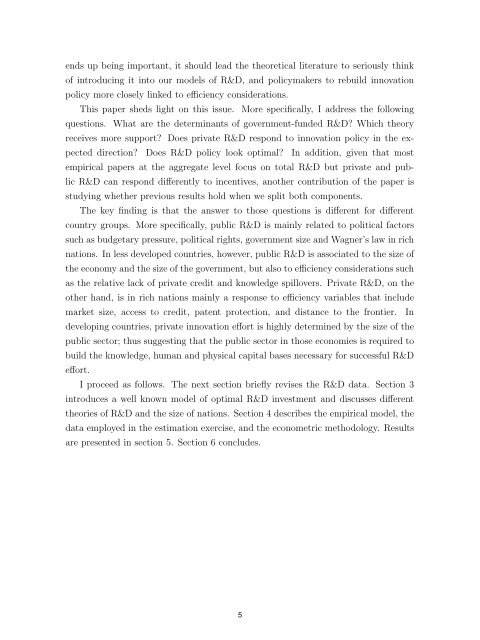Download - Ivie
You also want an ePaper? Increase the reach of your titles
YUMPU automatically turns print PDFs into web optimized ePapers that Google loves.
ends up being important, it should lead the theoretical literature to seriously think<br />
of introducing it into our models of R&D, and policymakers to rebuild innovation<br />
policy more closely linked to efficiency considerations.<br />
This paper sheds light on this issue. More specifically, I address the following<br />
questions. What are the determinants of government-funded R&D? Which theory<br />
receives more support? Does private R&D respond to innovation policy in the expected<br />
direction? Does R&D policy look optimal? In addition, given that most<br />
empirical papers at the aggregate level focus on total R&D but private and public<br />
R&D can respond differently to incentives, another contribution of the paper is<br />
studying whether previous results hold when we split both components.<br />
The key finding is that the answer to those questions is different for different<br />
country groups. More specifically, public R&D is mainly related to political factors<br />
such as budgetary pressure, political rights, government size and Wagner’s law in rich<br />
nations. In less developed countries, however, public R&D is associated to the size of<br />
the economy and the size of the government, but also to efficiency considerations such<br />
as the relative lack of private credit and knowledge spillovers. Private R&D, on the<br />
other hand, is in rich nations mainly a response to efficiency variables that include<br />
market size, access to credit, patent protection, and distance to the frontier. In<br />
developing countries, private innovation effort is highly determined by the size of the<br />
public sector; thus suggesting that the public sector in those economies is required to<br />
build the knowledge, human and physical capital bases necessary for successful R&D<br />
effort.<br />
I proceed as follows. The next section briefly revises the R&D data. Section 3<br />
introduces a well known model of optimal R&D investment and discusses different<br />
theories of R&D and the size of nations. Section 4 describes the empirical model, the<br />
data employed in the estimation exercise, and the econometric methodology. Results<br />
are presented in section 5. Section 6 concludes.<br />
2<br />
5

















